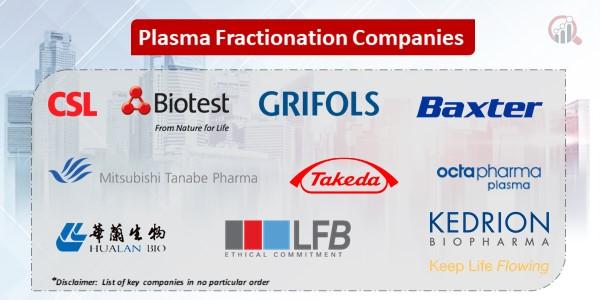From Blood Plasma to Life-Saving Therapies: A Look at Plasma Fractionation Techniques

Plasma Fractionation Market: Unpacking Methods and Top Players
The plasma fractionation market thrives on innovative methods to isolate life-saving proteins from donated blood plasma. But with various techniques available, let's delve into some key questions:
1. Which Method Reigns Supreme? A Look at Market Share
Currently, chromatography holds the dominant position in Plasma Fractionation market. Its high resolution and scalability make it ideal for isolating specific proteins with exceptional purity. However, experts predict a rise in the use of membrane filtration techniques like ultrafiltration. These methods offer faster processing times and potentially lower costs.
2. Efficiency and Purity: The Pros and Cons of Each Method
- Cryoprecipitation: This traditional method is relatively inexpensive but offers lower purity and yield.
- Chromatography: While gold-standard for purity, it can be expensive and time-consuming.
- Ethanol Precipitation: This method is cost-effective but can be harsh on proteins, impacting their functionality.
- Ultrafiltration: This membrane-based technique offers high efficiency and purity, making it a strong contender for future growth.
3. Isolating Specific Proteins: Matching Methods to Needs
Different methods excel at isolating specific proteins. Chromatography is preferred for immunoglobulins, while ethanol precipitation might be used for albumin purification. As research on plasma-derived therapies advances, fractionation methods will need to adapt to isolate novel proteins effectively.
4. Innovation on the Horizon: Emerging Technologies in Plasma Fractionation
The future of plasma fractionation is brimming with exciting developments. Here are some top contenders:
- Chromatographic advancements: New chromatographic resins and techniques promise even higher purity and faster processing times.
- Viral inactivation methods: Novel methods to ensure complete viral inactivation are being explored, enhancing the safety of plasma-derived products.
- Continuous processing: Streamlining fractionation processes with continuous flow technology can improve efficiency and reduce costs.
5. The Power Players: Leading the Charge in Plasma Fractionation
Several major companies are driving innovation and shaping the plasma fractionation landscape:
- CSL (Australia): A global leader with expertise in chromatography and a strong focus on R&D for new plasma-derived therapies.
- Grifols S.A. (Spain): Pioneers in plasma collection and fractionation, they invest heavily in next-generation technologies.
- Takeda Pharmaceutical Company Limited (Japan): A major player in Asia, they are known for their advanced protein purification technologies.
- Octapharma AG (Switzerland): Focused on continuous innovation, they are exploring new methods like membrane chromatography.
- Other Key Players: Pfizer, Bio Products Laboratory, Kedrion, ADMA Biologics, Japan Blood Products Organization, and KM Biologics are all making significant contributions to the field, with ongoing research and development efforts.
The plasma fractionation market is a dynamic space fueled by continuous advancements. As new technologies emerge and established players refine their methods, the future promises even more efficient and effective ways to isolate life-saving proteins from plasma, improving patient care worldwide.
For more information visit at MarketResearchFuture
Other Trending Reports
- Art
- Causes
- Crafts
- Dance
- Drinks
- Film
- Fitness
- Food
- Игры
- Gardening
- Health
- Главная
- Literature
- Music
- Networking
- Другое
- Party
- Religion
- Shopping
- Sports
- Theater
- Wellness
- IT, Cloud, Software and Technology


